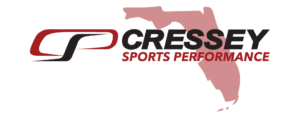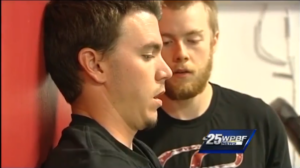
5 Lessons on Coaching
Today, I’ve got a guest post from John O’Neil, who is wrapping up his internship at the new Cressey Sports Performance facility in Jupiter, FL this week. John brings an excellent perspective, having been a CSP athlete before entering the strength and conditioning field. Enjoy! -EC
Late in my senior year of college, I didn’t know what I would do next. I wasn’t passionate about my major- mathematics- and couldn’t see myself sitting in a cubicle crunching numbers. My main passion is strength and conditioning and I wanted to become a strength coach. I contacted everyone whom I regularly read to see if I could spend my internship with them, and I quickly realized that the industry is filled with people looking to help out. Todd Bumgardner offered me an internship and I got my introduction to coaching at Ranfone Training Systems in Hamden, CT. I was fortunate enough to go from a summer there to a fall internship at the new Cressey Sports Performance – Florida, where I continue my transition from S&C junkie to S&C coach.

Here are some of the major takeaways I’ve had as I’ve gone from someone obsessed with the industry to someone actually in the industry:
1. You are a coach.
The most important thing I realized early on in my internships is that I was a coach, first and foremost. I needed to stop worrying about understanding PRI concepts when I wasn’t great at coaching a goblet squat. A basketball coach isn’t worrying about how his team can implement the triangle offense if his team can’t make a layup. During my first weekend at RTS, we hosted a Nick Winkelman seminar. Afterwards, I thanked Nick and told him I was less than a week in to my coaching career and that his cueing and motor learning lessons were stuff that I was looking forward to implementing. Nick responded by telling me that the most important thing at this stage of my career is to get great at coaching what you know, then expand how much you know. Your base of knowledge is only as useful as you can coach it.

2. Understand your impact.
One conversation I had with Todd early in my internship has resonated with me throughout. “My greatest skill as a coach is my ability to relate to my athletes,” he said. It had nothing to do with the science-related knowledge he has gained over the years. As a coach, your most important role in working with youth athletes isn’t to make sure they can perform a half-kneeling chop correctly; it’s to make sure you’re having a positive influence on said athlete’s life. Most of the people you work with won’t make a living performing these movements and may not even be an athlete beyond high school. Make sure your athletes know you care about them as people first and athletes second.
3. Understand the level of your athlete.
A typical day at CSP could involve working with a 12 year old kid who has never lifted a weight, a MLB player, and a 50-year-old with a 9-to-5 job. Each of these people will need to be coached very differently, and it’s important not only to get great at coaching exercises but coaching to populations as well. The kid is much more likely to need hands-on attention (kinesthetic), the pro athlete probably just wants to see and do (visual), and the middle-aged person might just want to be told what to do (auditory). While these aren’t set in stone, being able to coach everything you coach in different styles is very important.
4. Understand what kind of “vibe” you give off.
Admittedly, this is an area in which I struggle, but have worked hard to improve. I’m an introvert by nature and don’t always convey the sense that I want to be where I am. Case in point, many of my girlfriend’s friends think I don’t like them because of the vibe I give off when I’m surrounded by them, which obviously isn’t the case. As evidenced by the energy that Mike, Todd, and Scott bring to the gym, everyone that trains at RTS knows their coaches want to be there, often times more than they do. Todd told me that I won’t get the results I want unless my clients know that I love this stuff as much as I do, and during my two internships it’s something I’ve been very conscious of. While I’ll never be a “rah-rah” style leader, I find it important to implement strategies to build rapport with every client and make sure they know that I want to be there. These are all simple, but easy to let slide. Tony Gentilcore’s blog posts on introverted coaches (here and here), as well as Miguel Aragoncillo’s Hard and Soft Skills of a Strength Coach are great reads that really explain these methods in depth.
5. You must have philosophical flexibility.
Both RTS and CSP share a common trait that I’m sure many in the industry do as well: they are constantly striving to get better as coaches as much as their athletes are striving to get better on the field. In my exit interview at RTS, Mike Ranfone said to me that their goal is not only to offer the best product they can at the time, but to insure that they will offer an even better product one year from now. At CSP, this is the same. Each of these places doesn’t have their system; they have a system that they believe to be the best they can give to the athletes at the current time.
[bctt tweet=”Strength coaches aren’t reinventing the wheel; they’re trying to make it spin better.”]
While your core philosophy will remain the same – good functional movement is good functional movement, and your athletes will still be looking to get faster, stronger, and stay healthy – always be willing to look at new ideas and see how they can make your system better.
While I have learned a lot throughout my two internships, these are the main points that I will take with me wherever I wind up coaching in the future. I’ve stressed to myself to make sure that I realize that each hour I am in the gym is not my 6th, 7th, 8th… hour. Rather, it’s a certain athlete’s first, and I want to make sure that my presence there positively impacts their life. I’ve had a great time as an intern at both locations and would highly recommend going the internship route to anyone interested in becoming a coach.
About the Author
John O’Neil has be reached at joh.oneil@gmail.com, or you can follow him on Twitter.



